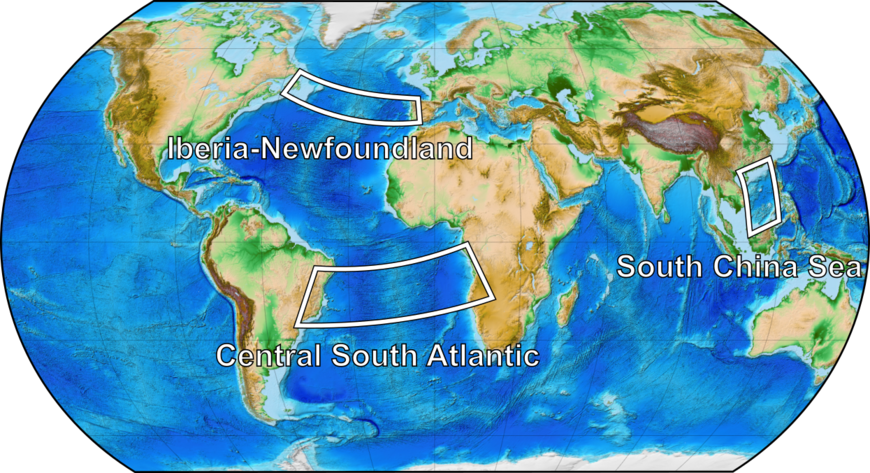Rifted Margin Architecture and Crustal Rheology
Extension in cold, strong, or thin crust is accommodated by brittle faults and ductile shear zones that facilitate narrow rifts with asymmetric fault geometries. Hot, weak, or thick continental crust is dominated by ductile deformation and often extends symmetrically into a wide rift system. This simple recipe provides the standard framework to understand initial rift geometry, however, it is insufficient to account for the dynamics of intermediate and late rift stages that shape the final margin architecture.
Here we review the formation of three magma-poor margin pairs, Iberia-Newfoundland, the central segment of the South Atlantic Rift, and the South China Sea by integrating observational data into a numerical forward modelling framework. Exemplified by the Iberia-Newfoundland conjugates and the Central South Atlantic, we define three characteristic rift phases: an initial phase of simultaneous faulting, an intermediate phase of rift migration that involves sequential fault activity, and finally, the breakup phase. Formation of the predominantly symmetric and wide margins of the South China Sea was controlled by extraordinarily weak crust that extended the phase of simultaneous faulting until breakup.
Cite as:
Brune, S., Heine, C., Clift, P.D., and Pérez-Gussinyé, M., 2017, Rifted margin architecture and crustal rheology: Reviewing Iberia-Newfoundland, central South Atlantic, and South China sea: Marine and Petroleum Geology, 79, 257–281, doi: 10.1016/j.marpetgeo.2016.10.018.
Download and Resources:
Numerical model for continental breakup between Iberia and Newfoundland during Late Jurassic / Early Cretaceous times. A narrow and moderately asymmetric initial rift phase generates a narrow Newfoundland and a wider Iberian margin
Numerical model for continental breakup between Brazil and Angola in the Early Cretaceous. A narrow and asymmetric initial rift phase generates a very asymmetric margin configuration with one narrow and one wide margin.
Alternative scenario for continental breakup between Brazil and Angola. The weaker crust generates a wide rift. Nevertheless, rift migration leads to the formation of a very asymmetric margin pair.
Numerical model for South China Sea formation during the Paleogene. The very weak crust of this model decouples crust and mantle deformation throughout rift history. The rift system evolves in wide rift mode until crustal breakup and generates two wide and symmetric margins.
Back to CRYSTALS group page

